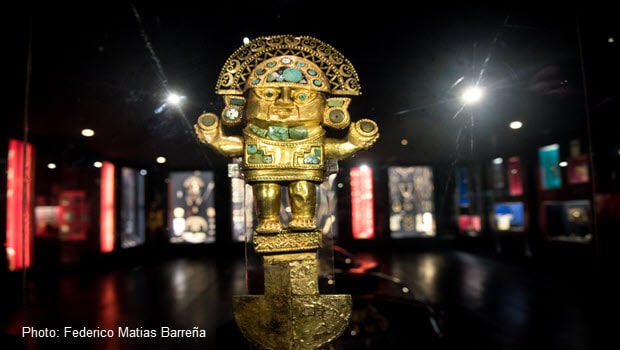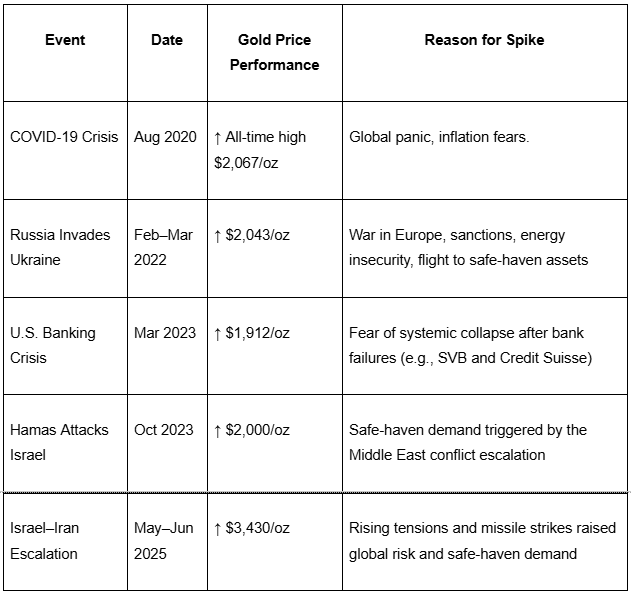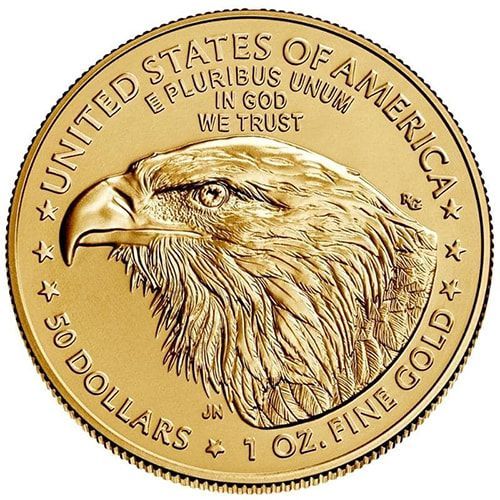Jump to: Why is Gold So Valuable? | What Makes Gold So Rare? | Why Do Investors Trust Gold? | Modern Ways of Investing in Gold
Gold has been valuable since ancient times due to its rarity and aesthetic appeal. Today, it remains a valuable asset, given its historical significance, high demand across various industries, and the trust it inspires among investors.
Often considered a safe haven, it can hold or even increase its value during economic uncertainty, with a low correlation to other investments.
KeyTakeaways
- Gold’s value is rooted in the history of its use from ancient cultures to modern ones: For over 4,000 years, gold has been prized for its rarity, beauty, and symbolic significance, making it a long-standing store of value across civilizations.
- Scarcity supports long-term value: Gold occurs in the Earth’s crust at just 0.004 ppm, with only about 216,265 tonnes ever mined, reinforcing its limited supply as a precious metal despite ongoing production.
- Unique physical properties enhance investment appeal: Gold’s durability, corrosion resistance, malleability, and compactness make it ideal for storage, transport, and preservation over time.
- Safe-haven status drives demand in crises: During economic or geopolitical instability, gold’s low correlation to other assets and its liquidity make it a preferred wealth-preservation tool for both small investors and central banks.
- Price is perception-driven in the modern market: Today, gold’s value, particularly in the form of gold bullion, is influenced less by its industrial use and more by its perceived role as a stable and trustworthy asset during times of uncertainty, which directly affects demand and pricing.
Why Has Gold Been Valuable for Thousands of Years?
Inherent value
Inherent value or intrinsic value refers to the value something has because of its own essential properties, rather than because of laws, currency systems, or temporary market trends. It’s the worth an asset holds in itself.
For gold, the inherent value foundation is on:
- Physical and Chemical properties: Gold is rare, does not corrode, and is highly malleable and dense. It doesn’t tarnish or degrade, so gold mined thousands of years ago remains as good as new.
- Cultural and historical role: Across civilizations, gold has symbolized wealth, status, and permanence for over 4,000 years.
- Universal recognition: It’s accepted globally, making it valuable beyond local economies or political borders.
A 4,000-Year Legacy: Gold as Symbol of Power and Divinity
Gold has been valued since the earliest civilizations, with the Sumerians among the first to mint and treasure it, and the Egyptians later elevating it into the iconic symbol of wealth and divinity we most associate with the ancient world.
Furthermore, the value of gold has long been based on its rarity, beauty, and sacred significance, as exemplified by the Incas of South America, who regarded it as the sweat of the sun god and a divine link to him.

However, the first coinage use dates back to the 7th century BC, (even before the Incas) when the ancient kingdom of Lydia, now western Turkey, produced the first known coin. It was crafted from electrum, a naturally occurring alloy of gold and silver with traces of copper.

This innovation marked a turning point, as gold has a low melting point, which makes it easy to mix with other metals to turn into coins. It became central to the creation of trade systems, facilitating commerce among nations for millennia.
Today, gold’s value remains strong, still deeply rooted in cultural heritage and symbolically tied to wealth and national identity.
From the ritual treasures of Sumer and Egypt to the first coins of Lydia, gold’s role in early civilizations laid the foundation for its eventual transformation into the backbone of economies under the gold standard centuries later.
The Gold Standard
Historically, the U.S. dollar was backed by gold, allowing people to exchange it for a fixed quantity of the metal. That fixed price is then used to establish the value of the currency. This standard prevailed from the 1870s through the 1930s.
For instance, if the U.S. hypothetically set the price of gold at $1,000 per ounce, the dollar would be worth 1/1,000th of an ounce of gold.
Today, however, most currencies, including the dollar, are fiat money, no longer linked to any physical asset.
Their value depends entirely on government authority and public confidence, which means that episodes of a weaker dollar or currency volatility highlight their fragility compared to the enduring stability of gold.
What Makes Gold So Rare and Physically Valuable?
Gold Rarity
So, how rare is gold in technical terms? According to the Royal Mint, it occurs at approximately 0.004 parts per million (ppm), totaling roughly 400 billion kilograms.
While that might sound like a lot, most of it lies far beyond our reach, in inner layers of the planet, making accessible gold truly scarce. In fact, most of the gold we find at the surface is carried there by molten rock flowing beneath the Earth, depositing gold grains through volcanic and other geological activities.
In 2024, China surpassed the United States as the world's largest gold producer. It produced approximately 370 metric tonnes of gold, accounting for roughly 0.17% of all the gold ever mined.
And according to a recent article published earlier this year, the World Gold Council estimates that humanity has mined approximately 216,265 metric tonnes of gold throughout history, which could fit into a single cube measuring around 22 meters on each side.
Silver Rarity
By contrast, silver is far more abundant. It occurs at about 0.075 parts per million (ppm) in the Earth’s crust, almost twenty times more common than gold. This greater availability helps explain why silver has historically been less valuable, despite its wide use in coinage, jewelry, and industry.
While both metals share a reputation as precious, gold’s extreme rarity and durability have solidified its role as the ultimate store of value, whereas silver has often been regarded as the more practical and accessible counterpart.


The American Silver Eagle is the most popular bullion product among silver investors.
In recent years, however, silver stacking has become a growing trend among investors, boosted by its dual status as both a precious asset and a highly strategic metal essential for modern industries such as electronics.
For many investors, this data underscores that even with ongoing mining, gold’s limited supply ensures its rarity and helps maintain its long-term value.
Chart: Physical Properties of Gold.
Gold is unique among metals for its exceptional combination of properties, often described as chemically uninteresting:
It is the most malleable and ductile metal known, can be shaped or drawn to extreme thinness without breaking, resists corrosion and tarnish better than almost any other element, and has a distinctive yellow color not very common in noble metals.
This rare mix of beauty, durability, and chemical stability sets gold apart, making it a timeless store of value. See an objective comparison of the yellow element with the most popular precious metal counterpart, silver.
|
Property (Investor-Relevant) |
Gold (Au) |
Silver (Ag) |
Why It Matters for Value |
|
Abundance in Earth’s Crust (ppm) |
0.004 |
0.075 |
Gold is approximately 19 times rarer, which naturally supports higher prices. |
|
Corrosion Resistance |
Excellent: does not rust, tarnish, or corrode (although it will dissolve in aqua regia, a mixture of nitric and hydrochloric acids). |
Poor: tarnishes when exposed to sulfur |
Gold’s permanence ensures long-term preservation of wealth without maintenance. |
|
Malleability / Ductility |
Highest of all metals |
Very high compared to other elements, but less than gold |
Easier fabrication, recycling, and trade in gold form. |
|
Density (g/cm³) |
19.32 |
10.49 |
Gold stores more value in less space, making it an ideal choice for compact and secure storage. |
|
Storage Considerations |
Compact, stable, low maintenance |
Tarnishes, needs protective storage |
Lower maintenance cost and effort for gold. |
|
Industrial Demand Share |
Low, especially if compared to Silver (roughly 10% of total gold demand) |
Considerably high for a precious metal |
Silver’s higher dependence on industrial applications makes its price more vulnerable to economic cycles. |
|
Jewelry Demand |
Extremely High |
Consistently lower than gold |
Gold’s cultural and luxury appeal supports sustained demand. |
|
Investment Demand |
Extremely High |
Consistently lower than gold |
Gold is more strongly driven by safe-haven and investment demand, which aids in price stability. |
|
Price Volatility (historically) |
Low–Moderate |
Moderate–High |
Gold offers more stable pricing in uncertain markets compared to silver. |
Why these matter to investors:
- Corrosion resistance: Critical for preserving value without incurring costly storage requirements.
- Industrial demand share: Higher industrial usage (e.g., silver, palladium) means the price is more closely tied to economic cycles.
- Price volatility: Gold tends to be a “safe haven,” while silver is much more volatile.
- Malleability & reactivity: Impacts recyclability, fabrication, and long-term durability in stored form.
Why Do Investors And Banks Trust Gold in Uncertain Times?
In recent years, many central banks have steadily increased their gold reserves, not only to preserve wealth but also to diversify away from reliance on fiat currency and the political decisions of major governments.
Throughout history, gold has served not only as a store of value but also as a hedge against economic and political uncertainty, a role that continues to make it a cornerstone of investment strategies today.
The Safe Haven Effect
In times of market turbulence, investors naturally gravitate toward assets that can retain, or even increase, their value. These are known as "safe havens" due to their historical tendency to perform well during downturns, which are, after all, a natural part of the market cycle.
However, as the conflict unfolds and markets adjust, gold prices tend to stabilize.
The perception of risk plays a significant role in driving people toward gold; however, it's essential to remember that prices will continue to fluctuate as market conditions evolve.
Many experts argue that the safest approach is a well-diversified portfolio. The ideal safe-haven asset is one with low correlation to the broader economy and/or other commodities, high liquidity (easy to convert into cash), limited supply, steady demand, long-term permanence, and functional value that cannot be easily replaced.
Based on these criteria, gold remains one of the most classic and reliable examples of a safe haven, and it can be found in the form of gold coins, rounds, and bars.
Take a look at this chart that illustrates how geopolitical events over the past five years have influenced the recent record highs in gold prices.

Modern Ways Of Investing In Gold
Gold bullion
Another form of gold investing is simply holding gold bullion, such as bars or coins. This tangible asset remains a direct way to own gold and is often chosen by those who prefer to invest in something they can physically store.
Many investors choose gold coins and bars over other precious metals because gold combines global recognition, high liquidity, and long-term value stability.
Coins like the American Gold Eagle or Canadian Maple Leaf, as well as bars ranging from 1 ounce to 1 kilogram in size, are especially popular due to their ease of trade, storage, and resale in the gold market.


The American Eagle, the official bullion coin of the United States, combines two powerful national symbols: Liberty, expressing the desire for freedom, and the bald eagle, representing courage and strength.


The Canadian Maple Leaf, Canada’s official bullion coin, features the iconic maple leaf, symbolizing national pride and unity, and the effigy of King Charles III on the obverse.

This 1 oz Valcambi gold bar is one of the most popular bullion products on the market, eligible for Precious Metal IRAs and suitable for investors looking to diversify their gold portfolio. Each bar contains 1 ounce of 0.9999 pure gold, certified authentic with its assay card.
Alternatives to Physical Gold
While gold has been valued for millennia in the form of coins and jewelry, today investors have multiple ways to gain exposure to its price without physically holding it. Popular options include gold ETFs, which track the price of gold and are traded on stock exchanges (like any other stock), allowing investors to speculate on or hedge against future price movements.
Another increasingly popular avenue in the gold market is the precious metals IRA. This type of retirement account allows a gold investor to hold physical bullion or other precious metals, such as silver, platinum, and palladium, within a tax-advantaged structure.
Precious metals IRAs appeal to those who see owning gold as a long-term hedge against inflation and market volatility, while still benefiting from the security of regulated custodians.
For many individuals exploring gold investment, combining physical holdings in an IRA with paper assets, such as an exchange-traded fund, provides diversification and flexibility, aligning with different risk profiles and investment goals.
Final Words
Gold has maintained its position as a valuable metal throughout human history, from ancient civilizations to modern markets. Its enduring appeal lies in its relative scarcity as a rare metal; as gold plays an essential role for investors looking for stability when fiat currencies weaken or markets become turbulent.
Across many countries, people continue to turn to gold as a store of value, driven by both its historical significance and its limited supply, ensuring that its role as a hedge and symbol of wealth remains as strong today as it has been for millennia.



















